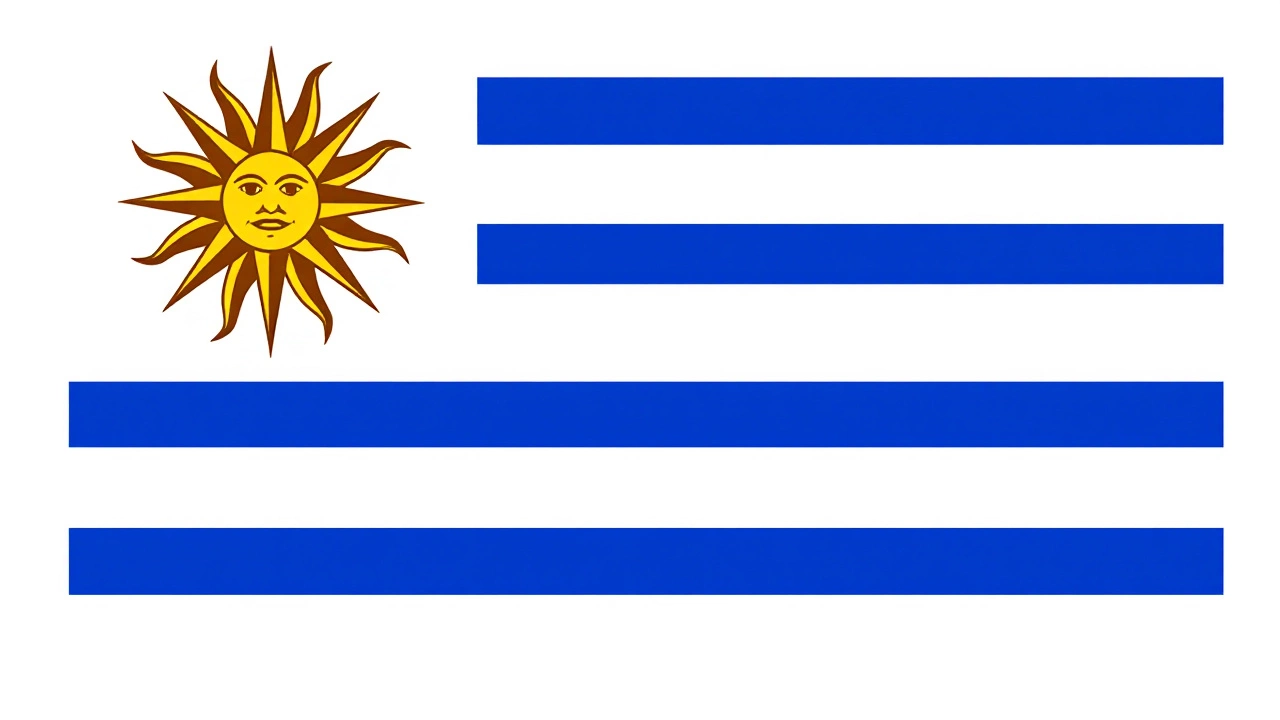It wasn’t the goal fest fans hoped for, but Mexico vs Uruguay delivered something rarer in international friendlies: pure, unrelenting tension. On November 15, 2025, at 5:00 PM local time in Torreón, the two Latin American powerhouses played out a 0-0 draw that felt more like a war of attrition than a friendly. Neither side broke through, despite countless chances, controversial calls, and moments of brilliance — and that’s exactly what made it unforgettable.
Intensity Without Results
Fox Deportes called it "TOTAL INTENSITY," and the broadcast didn’t exaggerate. From the opening whistle, both teams pressed with ferocity. Mexico, especially, looked sharper when they didn’t have the ball. Analyst Mariano noted at the 155-minute mark: "GOOD PRESSURE BUT MEXICO LOOKS BETTER WHEN THEY DON’T HAVE THE BALL." That’s not typical for a team often criticized for over-relying on possession. Instead, Mexico’s midfield — led by Reyes, Ruiz, and Álvarez — hunted in packs, forcing Uruguay into rushed clearances. But when the ball reached the final third, things fell apart.Missed Chances That Haunt
The real story wasn’t the defense — it was the finishing. Raúl Jiménez, Mexico’s veteran striker, squandered a golden opportunity in the 56th minute. Fox Deportes commentator Rodolfo didn’t hold back: "THE LAST MAN HE WOULD EXPECT TO MISS AND THAT KIND OF SITUATION. THAT WAS A REAL OPPORTUNITY. LOZANO. WE ALL JIMENEZ JUST TOOK IT! HESITATION." Jiménez, usually clinical, hesitated as Hirving Lozano cut inside, then took a poorly timed shot that sailed wide. Lozano himself had another chance moments later — a long-range effort that was "ambitious" and "a couple of yards over," according to commentary.And then there was the moment that had the broadcast booth buzzing. In the 87th minute, Mexico’s Johan Vásquez rose for a header from the center of the box, assisted by Gilberto Mora. The ball was heading in — until Santiago Mele, Uruguay’s goalkeeper, stretched out and tipped it over. The save was spectacular. But what followed was chaos.
The Penalty That Wasn’t
Just minutes before Vásquez’s header, a collision in the box sparked outrage. Fox Deportes’ Keith flagged it: "AND A CHANCE COMING THE OTHER WAY AND GOES DOWN! HE LOOKED LIKE IT MIGHT HAVE BEEN A CONTACT. NO PENALTY FOR NOW." Analyst Mariano didn’t agree. "I THINK IT WAS A LITTLE BIT OF CONTACT INSIDE OF THE BOX TROUBLE," he said. Then, with rising urgency: "IT IS CLEAR. THERE’S CONTACT INSIDE OF THE BOX." He repeated it twice more. The referee saw nothing. The replay showed a slight tug on the jersey — not enough for a penalty under current VAR standards, but enough to make fans and analysts question the consistency of officiating.
Defensive Resilience and Tactical Shifts
Uruguay, often criticized for defensive fragility in recent years, looked disciplined. Mele, 28, was the star — making three critical stops, including the one that saved Vásquez’s header in stoppage time. Meanwhile, Mexico’s defense, anchored by César Montes, held firm. Montes’ clearance in the 53rd minute was described as "GOOD," but Mexico’s inability to react to the second ball — a cross by Olivera — exposed a recurring issue: transition defense.Both teams rotated heavily. Mexico used five backup goalkeepers on the bench — Kevin Álvarez, Armando González, Jorge Ruvalcaba, Carlos Acevedo, and Alexis Gutierrez — suggesting this was as much about evaluation as it was about winning. Uruguay, too, fielded a mix of experienced players and youth, with only three starters from their last competitive match.
Why This Match Matters
This wasn’t just a tune-up. It came on the same day as the United States Men’s National Team beat Paraguay 2-0 in Chester, Pennsylvania — a result that shifted regional momentum. For Mexico, the draw is a red flag. They’ve scored just once in their last three friendlies. For Uruguay, it’s a sign they’re still capable of grinding out results, even without their star forwards.Both teams are preparing for 2026 World Cup qualifiers. Mexico, in CONCACAF, needs to find a consistent attacking identity. Uruguay, in CONMEBOL, must prove they can defend without being boring. This match gave both coaches plenty to chew on — and not just about the missed chances.

What’s Next?
Mexico’s next fixture is a high-stakes qualifier against Canada in late January. Uruguay faces Chile in March. Both will likely make significant lineup changes. But one thing is clear: the pressure is mounting. Mexico’s fans are growing impatient. Uruguay’s coaching staff is quietly evaluating whether their current core can still compete at the highest level.Frequently Asked Questions
Why did Mexico struggle to score despite having so many chances?
Mexico’s attack lacked cohesion in the final third. While midfielders pressed well, the forwards — particularly Raúl Jiménez and Hirving Lozano — hesitated on key opportunities. Jiménez missed a clear one-on-one, and Lozano’s long-range shot was off-target. The team’s reliance on individual brilliance, rather than structured movement, exposed a tactical flaw. Without a true playmaker in the 10 role, their chances were often isolated and poorly finished.
Was the non-call on the potential penalty justified?
The contact inside the box was minimal — a slight tug on the jersey, not a clear foul under current FIFA guidelines. While Fox Deportes’ analyst Mariano called it "clear," VAR reviews in recent tournaments have shown similar incidents are rarely penalized unless there’s a clear trip or push. The referee’s decision was technically correct, but the inconsistency in how such moments are handled continues to frustrate fans and analysts alike.
How did Santiago Mele perform under pressure?
Santiago Mele was Uruguay’s standout performer. His stoppage-time save on Johan Vásquez’s header was world-class — reflexes, timing, and positioning all perfect. He also made two other critical saves in the 30th and 68th minutes. At 28, he’s proving to be a reliable last line of defense, especially after Uruguay’s shaky goalkeeping in recent qualifiers. His performance could solidify his place as Uruguay’s No. 1 heading into 2026 World Cup qualifiers.
What does this result mean for Mexico’s World Cup qualification chances?
While it’s just a friendly, Mexico’s inability to score against a strong Uruguay side raises concerns. They’ve now gone three matches without a goal in friendlies — a worrying trend ahead of their crucial CONCACAF qualifiers. If their forwards continue to miss clear chances, even a strong group stage position won’t guarantee advancement. The coaching staff must address finishing drills immediately, or risk being eliminated on goal difference in a tight group.
Why was this match held in Torreón instead of a bigger city like Mexico City?
Mexico’s federation has been rotating venues to build support in secondary markets. Torreón, in Coahuila, has a passionate fanbase but rarely hosts national team games. This was part of a broader strategy to expand the team’s national footprint — especially with the 2026 World Cup co-hosted by the U.S., Canada, and Mexico. Playing in smaller cities helps engage regional fans and test infrastructure ahead of tournament matches.
How does this result compare to past Mexico-Uruguay friendlies?
Historically, these matches are tight. Their last meeting in 2022 ended 1-1 in Miami, with Mexico winning 3-2 in a 2021 friendly. The 0-0 draw in Torreón is the first scoreless result between them since 2016, when they met in a 0-0 tie in Los Angeles. Both teams have become more defensively cautious since then, prioritizing structure over flair — a shift that’s reflected in this match’s physical, low-scoring nature.
